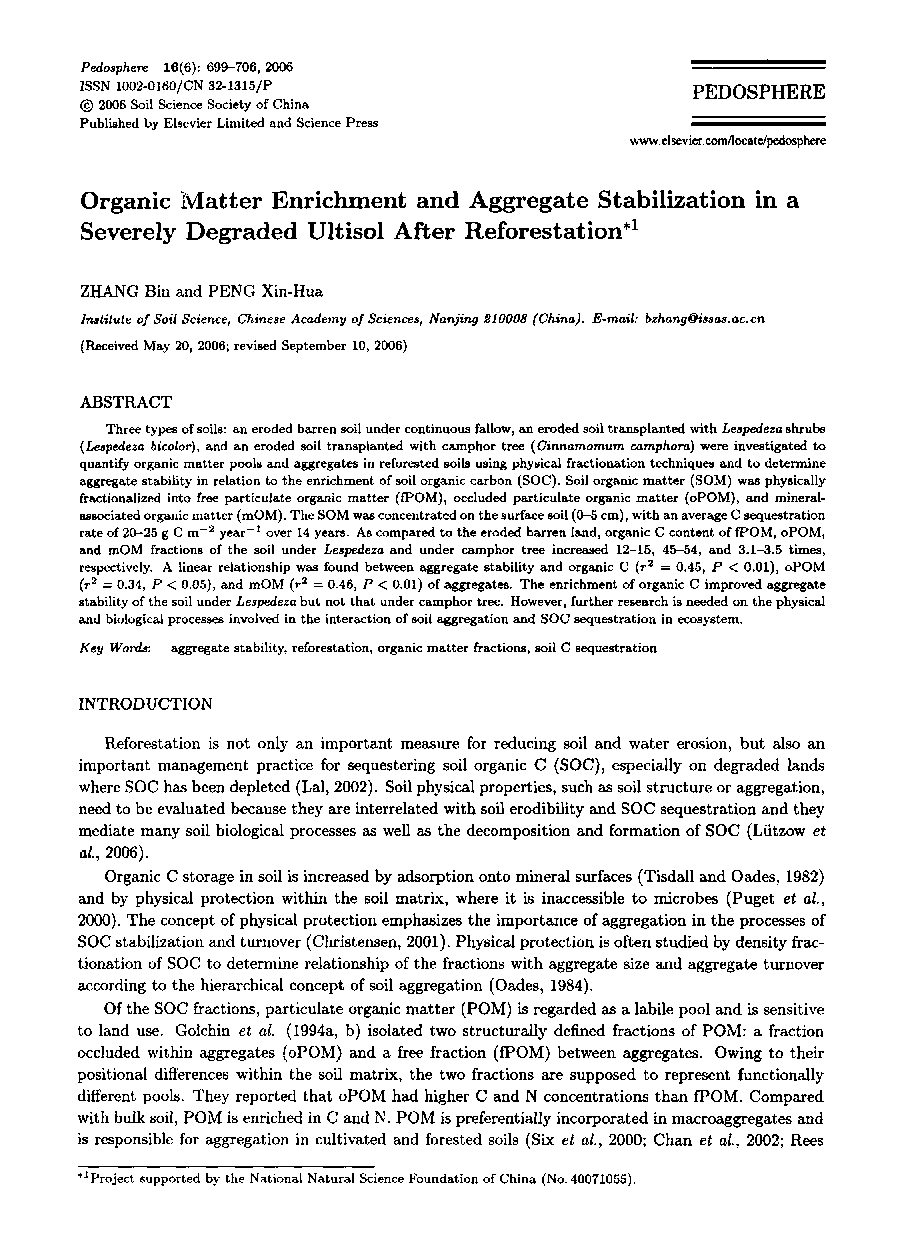| Article ID | Journal | Published Year | Pages | File Type |
|---|---|---|---|---|
| 4582220 | Pedosphere | 2006 | 8 Pages |
ABSTRACTThree types of soils: an eroded barren soil under continuous fallow, an eroded soil transplanted with Lespedeza shrubs (Lespedeza bicolor), and an eroded soil transplanted with camphor tree (Cinnamomum camphora) were investigated to quantify organic matter pools and aggregates in reforested soils using physical fractionation techniques and to determine aggregate stability in relation to the enrichment of soil organic carbon (SOC). Soil organic matter (SOM) was physically fractionalized into free particulate organic matter (fPOM), occluded particulate organic matter (oPOM), and mineral-associated organic matter (mOM). The SOM was concentrated on the surface soil (0–5 cm), with an average C sequestration rate of 20–25 g C m−2 year−1 over 14 years. As compared to the eroded barren land, organic C content of fPOM, oPOM, and mOM fractions of the soil under Lespedeza and under camphor tree increased 12–15, 45–54, and 3.1–3.5 times, respectively. A linear relationship was found between aggregate stability and organic C (r2 = 0.45, P < 0.01), oPOM (r2 = 0.34, P < 0.05), and mOM (r2 = 0.46, P < 0.01) of aggregates. The enrichment of organic C improved aggregate stability of the soil under Lespedeza but not that under camphor tree. However, further research is needed on the physical and biological processes involved in the interaction of soil aggregation and SOC sequestration in ecosystem.
